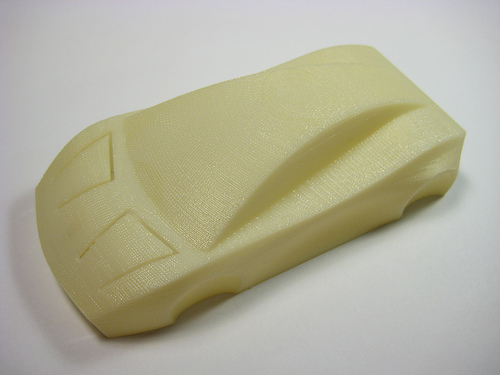By Ashley O’Neill (Contributor) – Email
Print Edition: March 6, 2013
Three-dimensional printing is becoming an increasingly-popular option for manufacturing solid objects.
This technology is already being used in some industries for some ground-breaking innovations, such as 3D printed teeth implants for use in dentistry, and pens that eject quick-cooling plastic that allows for physical 3D drawings.
However, another area that 3D printing is making is mark in is a little more unexpected: the automotive industry, where we could soon see a breakthrough in 3D printed vehicles.
Jim Kor, engineer and founder of Kor Ecologic, has finally made his vision come true: with his team he has developed the world’s first 3D printed automobile. His first creation, called the Urbee, is a three-wheeled and two-passenger vehicle that is both lightweight and aerodynamic. Instead of a traditional assembly line of robotic arms and metal frames, their printing facility consists of plastic-spraying printers. The vehicle is printed from acrylonitrile butadiene styrene (ABS) thermoplastic, and is sprayed into shape by the printers – one microscopic layer at a time.
The only non-plastic parts to the car are the engine and the internal metal framework. The Urbee’s current engine can only produce 10 horsepower so the designers are seeking a manufacturor to build a hybrid engine for market production.
On top of the internal frame, molten polymer is sprayed into the different shapes of the vehicle section by section until the final product is achieved. The process takes quite a long time, with just one part taking a few hundred hours to form. The Urbee took almost four months to manufacture.
The team programmed the machines to spray the plastic automatically once a design is uploaded, so no human supervision is required in the process. This is called “lights out” manufacturing, and it’s quite common in modern industries for an entire warehouse to operate on pre-programmed instructions.
Kor said in an interview with Wired magazine that he wanted to take all the small parts that make up a big car and make them a single large piece – so everything in the car will be one “part.” As a result, the vehicle will be lighter than an average car; the plastic used is just as strong as steel, but a plastic printed car is much lighter than an average car of the same size. For comparison, the Urbee only weighs 1200 pounds whereas a Mazda 3 is around 3046 pounds. As a result of a lighter body, there is less weight to push and the driver gets more kilometres per litre.
Wired also notes that when Kor prints the car’s dashboard, he’ll make it with the ducts already attached. This eliminates the need for joints and connecting parts since what would usually be dozens of different parts ends up being one piece of printed 3D plastic.
Even though production takes a long time, the designers take pride in the precision and ease of design 3D printing technology allows them. The process allows Kob and his team the flexibility needed to adjust thickness and rigidity in specific regions of the car.
The Urbee is still in early stages, but Kor and his team feel accomplished to just have made the first official prototype model. In the future we can expect an even more efficient combination of hybrid engine and design elements that aim to exceed safety standards and affordable pricing for 3D printed automobiles.


